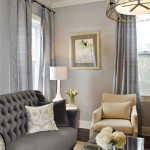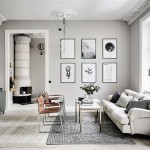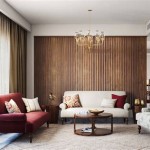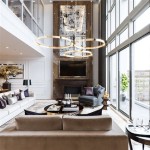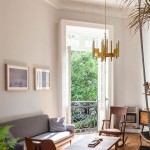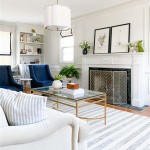Large Picture Considerations for Living Room Design
The selection and placement of artwork within a living room significantly impacts the overall aesthetic and ambiance of the space. A large picture in a living room can serve as a focal point, dictating the color palette, style, and perceived size of the room. Successful integration of a large picture requires careful consideration of various factors, including scale, subject matter, framing, and placement in relation to existing furniture and architectural elements.
Size is a critical element when choosing a large picture. An artwork that is too small will appear insignificant and lost on the wall, while a piece that is too large can overwhelm the space and appear disproportionate. A general guideline is to select artwork that covers approximately two-thirds to three-quarters of the available wall space above furniture, such as a sofa or console table. However, this is not a rigid rule, and personal preferences and the specific characteristics of the room should be taken into account.
The subject matter of the artwork should complement the overall design scheme of the living room. Abstract art can introduce color and texture, while representational art, such as landscapes or portraits, can evoke a particular mood or atmosphere. It is important to consider the existing color palette of the room and choose artwork that either harmonizes with or provides a striking contrast to the surrounding decor. The choice of subject matter should also reflect the homeowner's personal taste and interests, as the artwork will likely be a prominent feature of the living room.
Framing plays a crucial role in enhancing the appearance of the artwork and integrating it seamlessly into the living room. The frame should complement both the artwork and the surrounding decor. A simple, understated frame may be appropriate for a contemporary or minimalist living room, while a more ornate frame can add a touch of elegance and formality to a traditional space. The color and material of the frame should also be carefully considered. A metallic frame can add a touch of glamour, while a wooden frame can create a more natural and organic feel.
Placement is paramount to maximizing the visual impact of a large picture in a living room. The artwork should be positioned at eye level, which is typically around 57 to 60 inches from the floor. However, this may need to be adjusted depending on the height of the furniture and the viewing distance. The artwork should also be centered on the wall or above the furniture, unless there is a specific design reason to deviate from this guideline. Adequate lighting is essential for showcasing the artwork and highlighting its details. Natural light is ideal, but artificial lighting can also be used to great effect. Track lighting or spotlights can be used to direct light onto the artwork, while dimmer switches can allow for adjustments in the intensity of the light.
Scale and Proportion: Achieving Visual Harmony
Determining the appropriate size of a large picture involves assessing both the dimensions of the wall and the scale of the surrounding furniture. A common mistake is selecting artwork that is too small for the available wall space, resulting in a visually unbalanced composition. Conversely, an oversized piece can overwhelm the room and create a claustrophobic feeling. Achieving visual harmony requires careful consideration of the relationship between the artwork, the wall, and the furnishings.
When hanging a large picture above a sofa, the artwork should ideally be approximately two-thirds to three-quarters the width of the sofa. This proportion helps to create a sense of visual balance and prevents the artwork from being overshadowed by the furniture. The height of the ceiling also plays a role in determining the appropriate size of the artwork. In rooms with high ceilings, a taller piece may be necessary to fill the vertical space and prevent the room from feeling empty. Conversely, in rooms with low ceilings, a shorter piece may be more appropriate to avoid creating a sense of compression.
Consider the viewing distance when determining the scale of the artwork. In large living rooms, a larger piece may be necessary to ensure that it can be appreciated from a distance. In smaller living rooms, a smaller piece may be more appropriate to avoid overwhelming the space. The level of detail in the artwork should also be taken into account. Highly detailed artwork may require a larger size to allow viewers to appreciate the intricate details.
Before making a final decision, it is advisable to use masking tape or paper to simulate the size and shape of the artwork on the wall. This allows for a visual assessment of the proportions and helps to avoid costly mistakes. Digital tools and augmented reality applications can also be used to visualize the artwork in the living room before making a purchase. These tools can provide a more accurate representation of the final result and help to ensure that the artwork is the right size and scale for the space.
Subject Matter and Style: Reflecting Personal Taste
The subject matter and style of a large picture should reflect the homeowner's personal taste and complement the overall design aesthetic of the living room. The artwork should evoke a feeling of pleasure and enjoyment and contribute to the overall ambiance of the space. There is a wide range of options available, from abstract paintings and photographic prints to landscapes and portraits. The key is to choose artwork that resonates with the homeowner and enhances the overall atmosphere of the living room.
Abstract art can be a versatile choice for a living room, as it can introduce color, texture, and visual interest without being overly representational. Abstract paintings can create a sense of energy and dynamism or evoke a feeling of calm and tranquility, depending on the colors and composition. Photographic prints can capture stunning landscapes, portraits, or abstract images, adding a touch of realism or surrealism to the living room. Landscapes can bring the beauty of nature indoors, while portraits can add a personal touch and create a sense of connection.
The style of the artwork should complement the overall design aesthetic of the living room. In a contemporary living room, a minimalist abstract painting or a sleek photographic print may be appropriate. In a traditional living room, a landscape painting or a portrait in a classic style may be more suitable. The color palette of the artwork should also be carefully considered. Choose artwork that either harmonizes with or provides a striking contrast to the existing colors in the room. Monochromatic artwork can create a sophisticated and understated look, while colorful artwork can add a pop of energy and vibrancy.
Consider the emotional impact of the artwork when making a selection. Choose artwork that evokes a feeling of happiness, peace, or inspiration. The artwork should be a source of visual pleasure and contribute to the overall well-being of the homeowner. Visit art galleries, museums, and online art retailers to explore different styles and subject matters. Talk to art consultants or interior designers for advice and guidance. Ultimately, the best artwork is the one that resonates most deeply with the homeowner and enhances the overall atmosphere of the living room.
Framing and Lighting: Enhancing the Visual Impact
The framing and lighting of a large picture play a crucial role in enhancing its visual impact and integrating it seamlessly into the living room. The frame should complement both the artwork and the surrounding decor, while the lighting should highlight the artwork's details and create a sense of depth and dimension. Careful attention to these details can elevate the artwork from a simple decorative element to a focal point that enhances the overall ambiance of the space.
The choice of frame should be based on the style of the artwork and the overall design aesthetic of the living room. A simple, understated frame may be appropriate for a contemporary or minimalist living room, while a more ornate frame can add a touch of elegance and formality to a traditional space. The color and material of the frame should also be carefully considered. A metallic frame can add a touch of glamour, while a wooden frame can create a more natural and organic feel. The width of the frame should be proportional to the size of the artwork. A wider frame may be appropriate for a larger piece, while a narrower frame may be more suitable for a smaller piece.
Proper lighting is essential for showcasing the artwork and highlighting its details. Natural light is ideal, but artificial lighting can also be used to great effect. Track lighting or spotlights can be used to direct light onto the artwork, while dimmer switches can allow for adjustments in the intensity of the light. The type of light bulb used can also affect the appearance of the artwork. LED bulbs are a good choice, as they provide bright, energy-efficient light and do not emit harmful UV rays that can damage the artwork. Avoid using fluorescent bulbs, as they can cast a harsh, unflattering light.
Consider the placement of the light fixtures in relation to the artwork. The light should be directed onto the artwork at an angle, rather than straight on, to avoid creating glare. The distance between the light fixture and the artwork should also be carefully considered. Too close, and the light may be too intense; too far, and the light may be too weak. Experiment with different lighting options to find the best solution for showcasing the artwork in its best light. Consider using a combination of ambient lighting, task lighting, and accent lighting to create a layered and dynamic lighting scheme.

Posters Canvas Art Buddha Paintings Wall Pictures For Living Room Modern Print Large Size Decorative No Frame Lazada Singapore

Living Room Wall Art Canvas Decor Great Big

Large 3d Blue Gold Metal Geometric Wall Art Decor For Living Room Homary

Large Living Room Ideas Practical Solutions For Big Spaces Decorilla Online Interior Design

5 Furniture Layout Ideas For A Large Living Room With Floor Plans The Savvy Heart Interior Design Décor And Diy

How Large Wall Art Enhances Your Living Room Big Décor

10 Modern Living Room Ideas Oppein

10 Large Living Room Ideas Decorating Den Interiors

17 Designer Large Living Room Ideas We Love Havenly Blog Interior Design

Big Abstract Golden Tree Canvas Painting Home Living Room Wall Decor Picture Large Decoration No Frame Lazada Singapore

